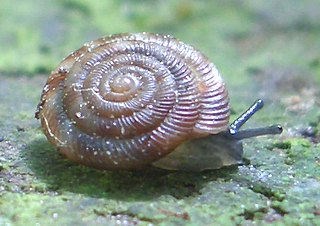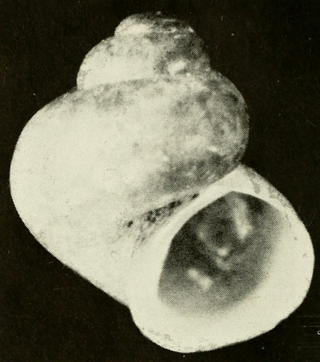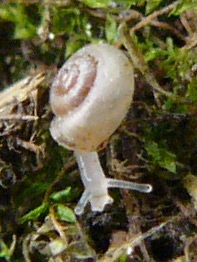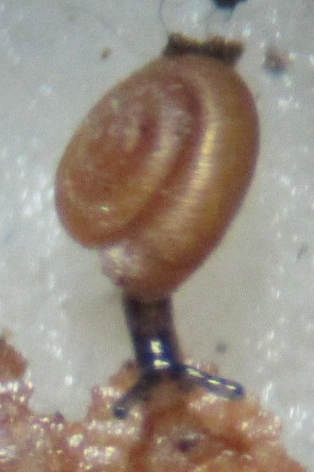
Discus is a genus of small air-breathing land snails, terrestrial pulmonate gastropod mollusks in the family Discidae, the disk snails.

George Hubbard Clapp was an American pioneer in the aluminum industry and also a numismatist.

The Cahaba pebblesnail, scientific name Clappia cahabensis, is a species of very small freshwater snail, aquatic gastropod mollusks in the family Lithoglyphidae.

Clappia is a genus of small freshwater snails that have an operculum, aquatic gastropod mollusks in the family Lithoglyphidae.

Cryptomastix is a genus of air-breathing land snails, terrestrial pulmonate gastropod molluscs in the family Polygyridae.
Paravitrea clappi is a species of land snail in the family Zonitidae, the true glass snails. It is known as the Mirey Ridge supercoil. This species is endemic to the United States, where it is known from the Great Smoky Mountains National Park in the Appalachian Mountains.
Paravitrea is a genus of small, air-breathing land snails, terrestrial pulmonate gastropod mollusks in the family Zonitidae, the true glass snails.

Valloniidae is a taxonomic family of small and minute, air-breathing land snails, terrestrial pulmonate gastropod mollusks in the superfamily Pupilloidea.

Polygyridae is a family of air-breathing land snails, terrestrial pulmonate gastropod mollusks in the superfamily Helicoidea.
Planogyra astericus, common name the eastern flat-whorl, is a species of small air-breathing land snail, a terrestrial pulmonate gastropod mollusk in the family Valloniidae.

Cryptomastix mullani is a species of air-breathing land snail, a terrestrial pulmonate gastropod mollusc in the family Polygyridae.

Marisa is a genus of freshwater snails in the family Ampullariidae, the apple snails.

Pyramidula rupestris is a species of very small, air-breathing land snails, terrestrial pulmonate gastropod mollusks or micromollusks in the family Pyramidulidae.

Punctum is a genus of very small air-breathing land snails, terrestrial pulmonate gastropod mollusks or micromollusks in the subfamily Punctinae of the family Punctidae, the dot snails.
Planogyra is a genus of small air-breathing land snails, terrestrial pulmonate gastropod mollusks in the family Valloniidae.

Cerodrillia clappi is a species of sea snail, a marine gastropod mollusk in the family Drilliidae.

Cerodrillia is a genus of sea snails, marine gastropod mollusks in the family Drilliidae.

Teredo is a genus of highly modified saltwater clams which bore in wood and live within the tunnels they create. They are commonly known as "shipworms;" however, they are not worms, but marine bivalve molluscs in the taxonomic family Teredinidae. The type species is Teredo navalis.
Marisa planogyra is a species of freshwater snail in the family Ampullariidae.












